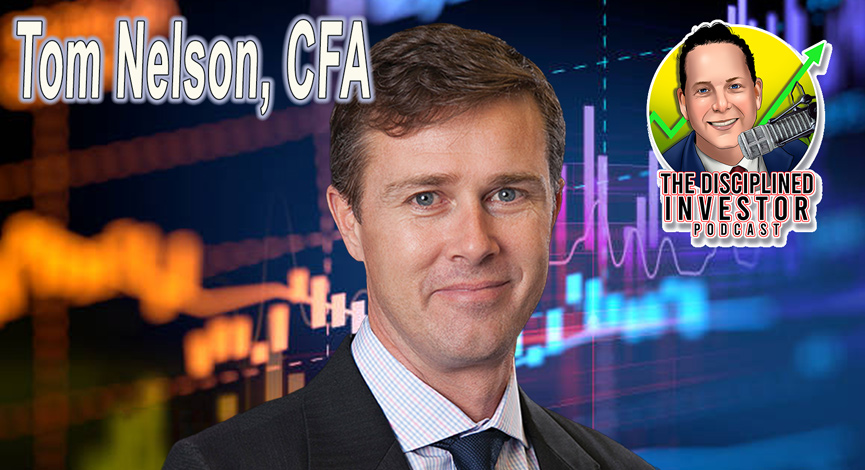Recently, I met with stock analyst and blogger Corey Rosenberg from AfraidtoTrade.com. I was very impressed with his general knowledge and ability to understand market trends. Lately he has been doing a great deal of work with Elliot Wave projections and charting. I have been following his ongoing commentary and would recommend you bookmark his site and visit it often.
Several TDI readers have asked about Elliot Wave and I thought it would be terrific if Corey would put together a primer on the subject. Here is his fine coverage of the often misunderstood topic:
Does the Elliott Wave Principle signal a buying opportunity now for stocks?
With Elliott Wave International founder Robert Prechter recently suggesting publicly that investors should “cover their short positions” in anticipation of a potentially strong rally that could last for months if not longer, it might be a good time to refresh the basics of the Elliott Wave Principle and what it might be saying at the moment for investors.
The Basics of Elliott Wave
The Elliott Wave principle was developed by Ralph Elliott in the 1930s to explain his observations of the price movements in the stock market. He noticed certain price patterns that seemed to repeat themselves in his work of studying 75 years of stock market action across multiple timeframes, and decided that many of these patterns appeared more than would be expected by random chance. Instead of assuming that stock market prices were random and unpredictable, he came to believe that there was order and structure that created the price patterns he was observing on his charts.
Later, he would ascribe changes in social mood and investor psychology to be the foundations for the developments of these patterns that he would describe in his “Wave Principle.” Similar to Charles Dow’s earlier work that stock prices move in trends comprised of observable ‘waves,’ Elliott further detailed these waves as part of a larger structure from which to understand and ideally profit from market movements.
Specifically, Elliott described how upward moving markets tended to unfold in five distinct waves: Three Waves to the upside separated by Two Waves – known as corrections – between them. After a five wave move had completed, he observed that three waves would follow which corrected, or retraced, a portion of the earlier price gains. Also, Elliott observed smaller five-wave sequences that comprised the larger waves that constructed the larger picture of trends, a process that would be described by Benoit Mandelbrot in the 1980s as “Fractals.”
Ralph Elliott’s observations remain controversial, and they are dismissed by many in today’s markets. The Elliott Wave Principle as we know it today is certainly not the absolute answer to profits in the stock market, but it can be useful to place the current price action into a logical framework for assessing probabilities and placing today’s price action into a larger structure from which to categorize market swings.
Elliott Wave in 2009
Before looking at the current structure of the S&P 500, it would be helpful to take a moment to review the idealized Wave Count structure as a reference.
An Ideal Wave Count depicts a Five-Wave sequence which is then retraced by a Three-Wave Correction. This structure may be observed on all timeframes. The Pattern shown above builds the larger structure, as in this diagram which shows that the image above is a “fractal” part of a larger 5-Wave Price Move that comprises the First Wave Up and the Second Wave Down (blue box). Waves 3 and 4 also have the exact same 5-wave up and 3-wave down structure.
The diagram represents how the smaller waves build the larger structures we observe. If this were an actual stock, we would expect Wave 5 up to begin here, which would contain its own fractal five-wave sequence to complete the larger pattern.
Why Five Waves? Why Not Seven or Ten?
This is one of the mysteries of the Wave Principle. Most likely, it reflects the reality that a minimum of Five Waves up which is corrected by Three Waves down is required to make progress. Otherwise, the stock market would remain flat, going up three or four waves and then going down three or four waves. The 5/3 structure seemed to be the minimum required to account for the upward bias in stock market prices.
What are the Characteristics of the Waves?
The Wave structure is not random, but is defined off of specific changes in investor psychology and social mood. Let’s begin a journey in a bear market in stocks, where prices have been going down for some time and investors are thoroughly discouraged. There is an upswing in price in the context of the overall bear market and pessimistic investors see it as a chance to sell into strength, believing that it is only a “Bear Market Rally.” Let us assume this is Wave 1.
After the move up, price turns down and heads lower as everyone expects, and investors say “I told you so. We’re still in a Bear Market.” The social mood is very negative as the bear market continues. However, this time, price does not take out the most recently established low, but finds support and begins heading higher. This might be defined as Wave 2 (a higher low).
Price now is traveling upwards and eventually does make a new high above what we are labeling as Wave 1. The public is often confused because the stock market tends to find a bottom before the Economy begins to strengthen. Those who were short-selling the market (or a stock) often place their stops above what they believe to be resistance levels, and Wave 1’s peak is a logical place to put them. As price travels higher, they are forced to cover their short positions through buying stock. Smart investors who have been “Bottom Fishing” might get aggressive as they believe a bottom is now in place and buy more stock. As the market continues to rise – let us say in Wave 3 – then investor confidence comes back and as Wave 3 makes a peak, it becomes evident that the Market has found a bottom and now is the time to buy into strength. This is why Third Waves tend to be so powerful – short-sellers have to cover and slowly, the investing public realizes the stock market is headed higher without them and so they jump aboard.
As Wave 3 Peaks, Wave 4 sets in which is often known as a stable “Profit Taking” retracement where investors sell some of their profits they may have made during Wave 3’s advance. Investors are confident and so they want to buy on any price weakness, as they expect a Bull Market is in full force and such a retracement offers an excellent buying opportunity.
Wave 5 is the result of these investors showing optimism and buying aggressively which drives the prices to new highs. However, investors who bought at lower levels might want to sell their positions to lock in their profits. Also, investor confidence will register the highest levels during final 5th Waves because optimism rules the day. However, eventually, a high will be set as all who desire to buy will have invest as much as they can invest , leaving no more capital on the sidelines to put to work in the stock market. Unfortunately, and ironically, this is when the market peaks as the market slides into a Corrective Phase which is comprised of the A Wave Down, B Wave Up, and C Wave back down as a bear market unfolds.
Eventually, as investor confidence is crushed as the Bear Market Continues, and everyone who is still holding stock but wants to sell it sells their positions, the market will find a Bottom and Wave 1 will begin as the cycle repeats itself as Elliott observed almost 100 years ago.
Can You Show Me a Recent Example of the Wave Principle?
Apple Inc (AAPL) offers us an excellent chance to observe the complete Wave structure on its weekly chart from 2005. Although many stocks reflect ideal Elliott Wave patterns, Apple is a popular stock that is followed widely by a number of investors.
After the Bear Market of 2000-2003, Apple shares hit a low of $6.36 in April 2003 after falling 83% off their 2000 price high. Price found a bottom and began rising into what would later be known as its Wave 1 Rally. Wave 2 began in 2006 as Apple found resistance about the $90 per share level and formed a Three-Wave (ABC) 42% decline to find support near $50 per share – Wave 2 was in place.
Third Waves are often the most powerful waves, as those who were short-selling Apple had to cover (buy) into continual price strength, and bullish Apple Investors became very confident and optimistic as they realized a bull market was evident for Apple stock.
Wave 4 was a simple and quick “profit taking” correction that set-up a new buying opportunity that drove investor optimism to new highs as price formed a 5-wave advance (within the final circled 5th wave) that took shares to their $202 per share peak. Eventually, shares began their decline as supply overtook demand, sending the stock into the large-scale three wave ABC Correction, in which Apple has – as of the time of this writing – lost 60% of its value.
So Where is the Stock Market Right Now in the Wave Count?
A Large-Scale Wave Count on the S&P 500 Monthly Chart places us in Wave C of a very large three-wave correction that began in 2000. The Peak in 2000 represented a final 5th Wave most likely of a larger 3rd Wave, which puts the whole Bear Market from 2000-2009 into context as an ABC Three-Wave Correction of a larger 4th Wave.
Wave A formed at the 2000 peak down to the 2002/2003 lows, while Wave B was a rally back up to retrace just over 100% of Wave A which lasted from 2003 until 2007, and we are currently in the third corrective Wave “C”.
If we look closer from the 2007 decline within the C Wave, we can see a distinct Five-Wave structure that has formed in Elliott textbook fashion. Although I have not discussed corrective waves much in this article, C waves subdivide themselves into 5-Wave structures. Let’s look at the subdivision of Wave C on the S&P 500:
The market peak occurred in October 2007 which began the C-Wave Correction Down which has just broken to new lows beneath the A-Wave (2002 Bear Market) lows as expected. Reference the “Ideal” Elliott Wave Count diagram – C Waves almost always break to new lows beneath Wave A in a correction.
The C Wave itself sub-divides (forms fractals) into a 5-Wave Structure, and I have gone to one more degree lower and subdivided each of the Waves within the larger structures that have formed so far. One point of confusion is that the 5-Wave Elliott Structure is normally shown as an up-impulse (as in the diagram) however the same idealized 5-Wave structure forms five waves to the downside with two upward corrective waves forming the pattern – in essence, during a down five-wave structure, you would flip the ideal chart upside down.
Noting the Wave Structure from 2007, we see that a 5-wave formation is very near completion, and as of this writing, it would seem that a fractal fourth (4) wave up followed by a fractal fifth (5) wave down would complete the 5-Wave major decline from the 2007 peak and suggest that a large-scale Three Wave Correction to the Upside – which could last months or longer – is expected next according to Elliott Wave Theory.
This also explains why Robert Prechter, considered by many to be the modern day authority on Elliott Wave Theory, is encouraging those with short (or inverse index funds) positions to cover them, as the Elliott Structure appears to be calling for a bottom in the stock market soon, having perhaps only two more fractal waves (one small up and one small down) to complete the 5-wave downward impulse pattern that began in October 2007.
There are no guarantees in the stock market, and stocks could certainly continue their decline without stopping, but the Wave Principle so far has been helpful in classifying the larger price structure and it may be worth heeding its signals at the moment, or at least be aware of what the principle might be signaling at the moment in the event that Mr. Elliott was correct in his observations, which appear to be still valid even in today’s markets.
—
Please make sure to visit AfraidtoTrade.com and thank hin for this great article.




















